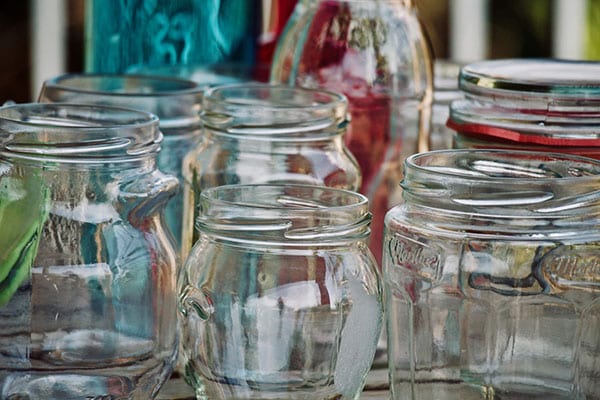Why feed birds in your garden?
Over the past 50 years the numbers of many so called ‘common’ birds have dramatically declined. We don’t know for certain why this is, but changing agricultural practices and a lack of food in the summer and winter are likely to have taken their toll. Building a bird feeder could really help.
Sometimes when we look out of the window, it is difficult to believe that song thrushes, sparrows and starlings are all struggling to survive in the countryside. But they are! These, among many others, are now red listed as birds of extreme conservation concern.
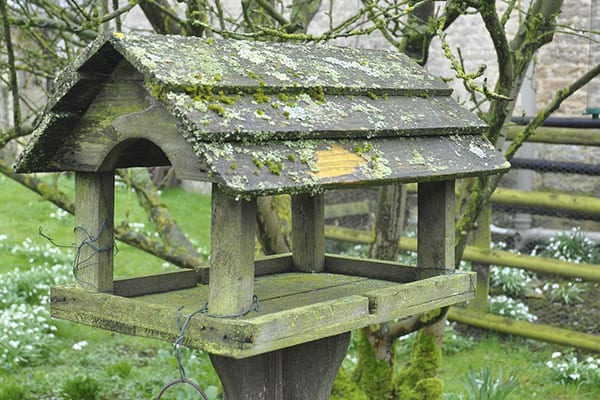
Bird Tables
Freestanding or hung from a tree use for seeds, chopped apples, cereal, bacon rind, biscuit crumbs, raisins, cooked potato.
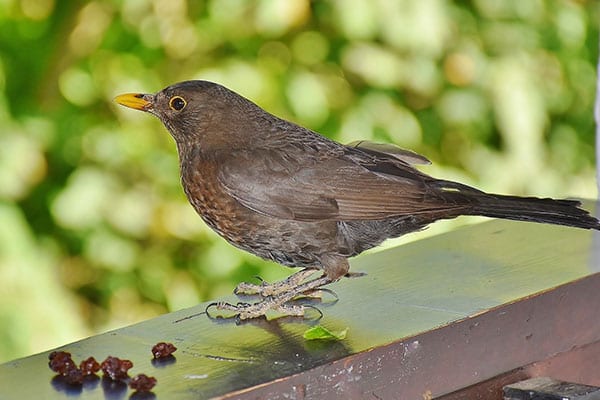
On the ground
Some birds, like blackbirds, thrushes and chaffinches prefer to feed on the ground. A ground feeder cage will help to protect birds from predators, such as cats.
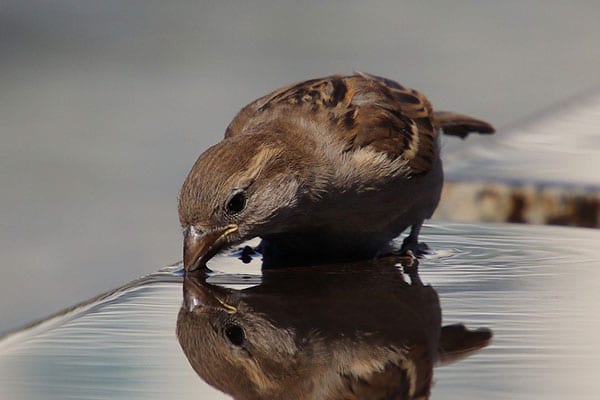
Water
Vital for all birds and lots of other wildlife too, a bird bath or shallow area in a pond, upside down plastic bin lid or large plant pot saucer.
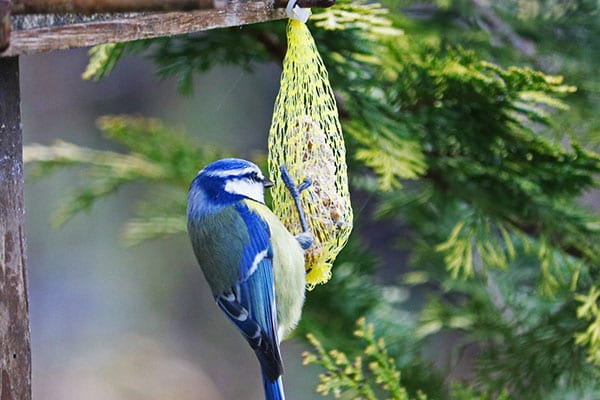
Fat Balls and Suet Blocks
Valuable source of energy and especially popular with the tit family. Avoid netted fatballs, as birds have been known to get tangled in the netting, and instead use a fat ball feeder or place straight on the bird table.
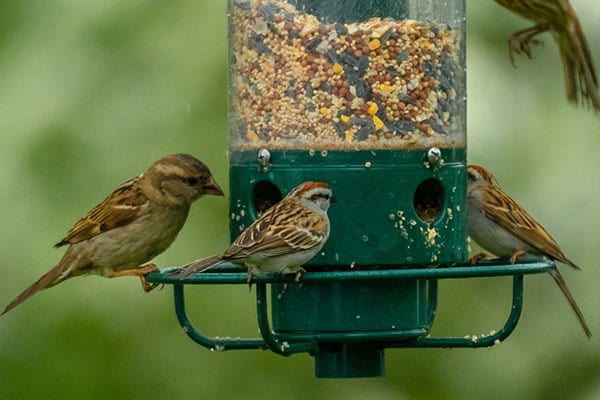
Feeders
Variety of styles, and the metal ones are generally longer-lasting. Mesh feeders are mainly used for dispensing peanuts. Seed tubes will attract a wide range of birds when filled with sunflower hearts or mixed seed, and niger seeds are a particular favorite of goldfinches.
Bird feeder hygiene and what can done to reduce risk of infection
Diseases that affect garden birds are spread when feeding sites are contaminated with the droppings or saliva of infected birds. The risk increases when many birds feed at the same places day after day for long periods.
- Use several feeding sites around the garden to reduce bird numbers at any one place.
- Rotate between feeding sites, so not all are in constant use.
- Only fill up feeders with as much food as the birds take. Don’t leave food hanging around in feeders for days to go mouldy.
- Clear up any food that is left under feeders at the end of the day.
- Clean feeders/feeding sites regularly using warm soapy water or 5 per cent disinfectant, especially in the months between January and May. Make sure to rinse any disinfectant off thoroughly and always allow feeders to air-dry completely before adding food.
- Maintain careful personal hygiene. Brushes and equipment used to clean feeders, tables and baths shouldn’t be used for other purposes. Rubber gloves should be worn and hands washed afterwards.
Pine Cone Feeder
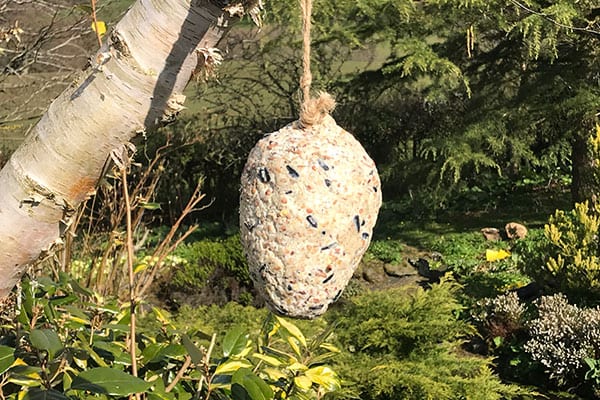
You will need…
- Pine or fir cones (dried out so they don’t open)
- Bird seed
- Raisins
- Peanuts
- Grated cheese
- Suet or lard
- A mixing bowl
- Scissors
- String
How to make
- Make your bird mix. Allow the lard to warm up to room temperature, not melted, cut it up into small pieces and put it in mixing bowl.
- Add the other ingredients to the bowl. Mix them together with your fingertips until the fat holds the ingredients together.
- Group cones together and loop the string around the top of them. Pack the sticky bird mix around the cones with hands, creating a ball shape.
- Put cones in the fridge or somewhere cold to set for an hour or so.
Toilet roll feeder
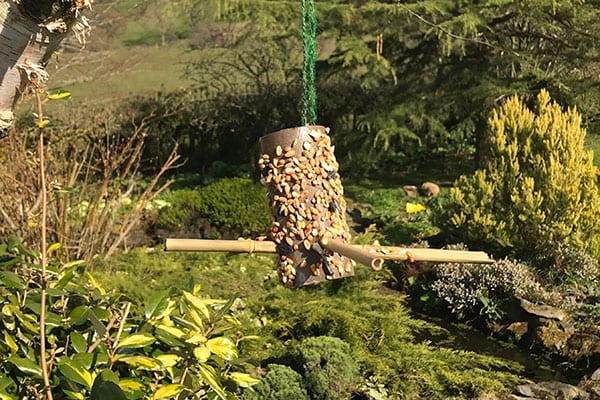
You will need…
- A cardboard tube from a toilet roll
- String
- Bird seed
- Peanut butter (no added salt and sugar versions are suitable for birds) or lard
- Thin sticks
How to make
- Start by making four holes in one end of your cardboard tube, these must be large enough for your sticks or skewers, but not so large that the sticks slide out. Be careful of any sharp ends!
- Make sure the holes opposite each other line up so that you can thread your sticks through.
- Next, make two small holes opposite each other in the other end of your tube. Use a butter knife or spatula to cover your roll in peanut butter, or lard.
- Roll the tube in bird seed so that the seed sticks to the lard. Finally, carefully thread the sticks through to make a cross shape, and thread a piece of string through the two top holes. Then you’re ready to hang your feeder outside!
- Tie it up in your garden where birds will feel safe eating.
Fat Ball Bird Feeder
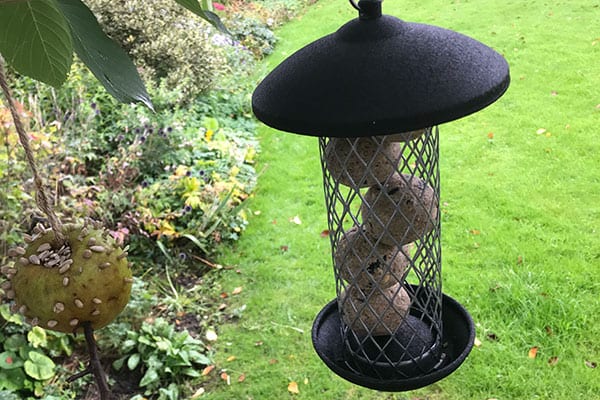
You will need…
- 1 cup coconut oil/lard/leftover fat
- 1 cup vegetable Suet
- 2 tbsp crunchy peanut butter
- 1/2 cup fresh coconut
- 1/2 cup linseed
- 1 cup mixed seed (I used sunflower and pumpkin) slightly crushed up
- 1/2 cup chopped raisins
- String
How to make
- Melt your fat and suet in a saucepan until liquid.
- Stir in the crunchy peanut butter.
- Mix in everything else thoroughly so that the oil is fully incorporated.
- Shape into balls it trapping the string inside and place in the freezer until set.
Apple Feeder
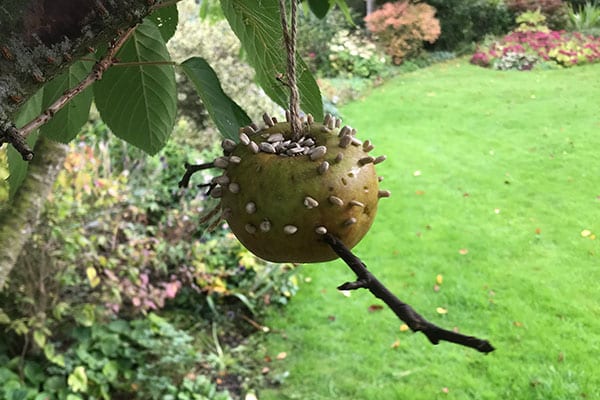
You will need…
- An apple
- A corer
- Sunflower seeds
- Three relatively thin sticks
- String
How to make
- Carefully remove the core from the apple, preferably by using a corer.
- Push the sunflower seeds into the top half of the apple for the birds to eat.
- Make perches for birds by pushing one stick into either side of the apple, near the bottom.
- Tie the string around the last stick and thread it through the core of the apple.
- Once you have made your apple bird feeder, tie it onto the branch of a relatively sturdy tree in garden or green space.
